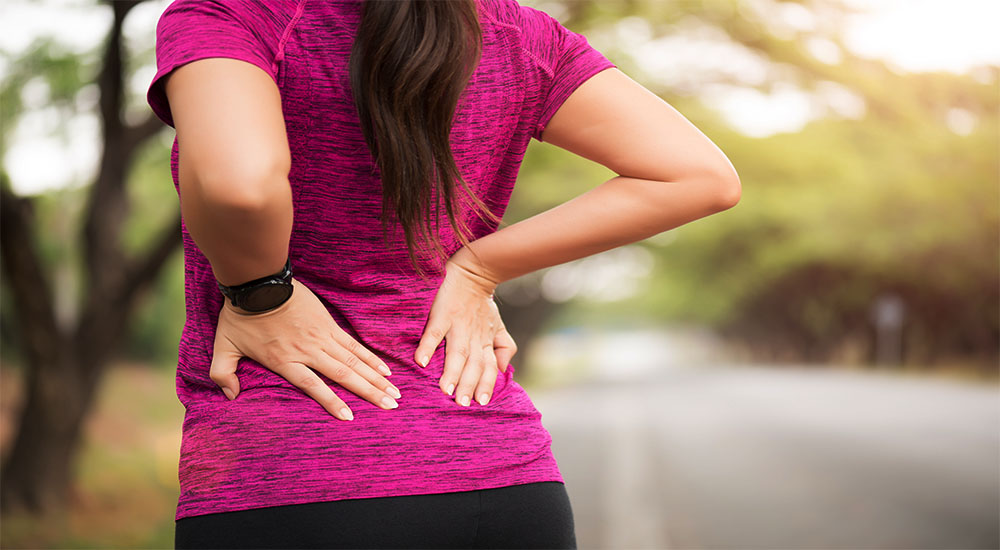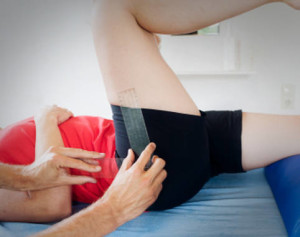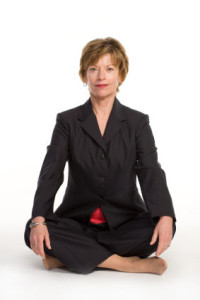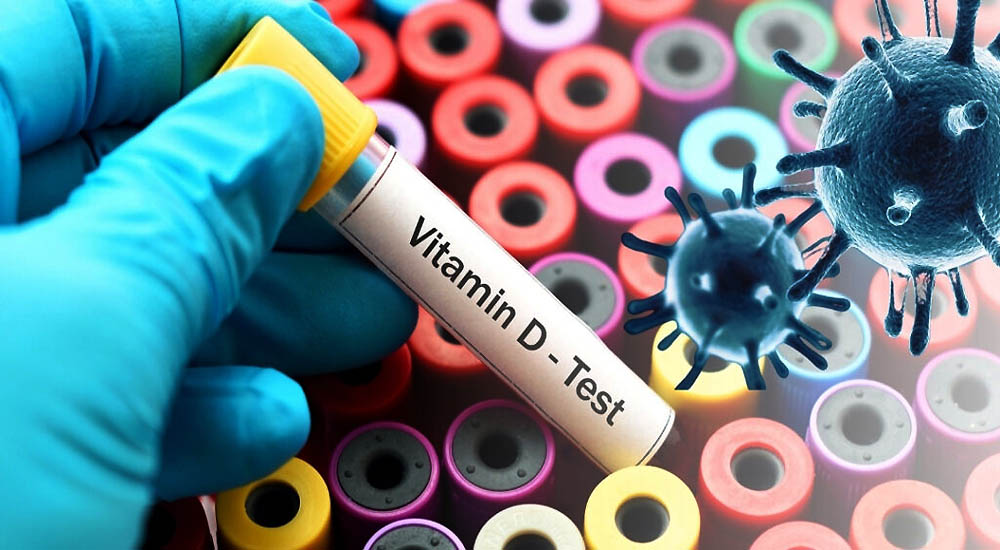Hip Pain? Physical Therapy Has the Solution

 Do You Have Hip Pain?
Do You Have Hip Pain?
If you don’t have hip pain yourself, you likely know someone who does. Hip pain can affect the young or old but regardless of your age, it can be debilitating. As a major weight-bearing joint, it’s difficult to be active when you’re affected by hip pain. Fortunately, our Physical Therapy department knows just what to do!
Even if you suffer from hip degeneration, and you’re contemplating surgery, we can let you know if that is the right next step. We have had several patients successfully avoid surgery with the right physical therapy program.
The Hips are Stress Points
Hips and shoulders both are natural stress points due to all the motion that takes place at these joints. (We’ll speak about the shoulder joint, which is perhaps the most versatile joint in the body, in a future blog.)
The hips are unique because they support the entire torso and are the connector joints between the torso and the lower extremities. The lower extremities (legs, knees, and feet) connect us to the ground and provide mobility but they are compromised in the presence of hip problems. The old adage that the “hip bone is connected to the knee bone” is very true.
Unfortunately, a problem in one area creates a problem in the area of the body that it is connected to as well.
Run, Run, Run!
On the one hand, the hips can take a lot of abuse. Look at runners and other athletes who jump and change positions quickly – putting a great deal of stress on the hip joints.
The hips seem to take this ‘punishment’ without much complaint, but if you’re in the training room post-game, you’ll likely hear the moans and groans and see limping athletes. The truth of the matter is that while the young might not show or feel the effects of hip abuse/overuse too acutely, degeneration takes time (decades) to set in, and it’s usually in the later decades that hip pain rears its ugly head.
Do You Have Early Symptoms of Hip Problems?
An early sign of something not quite right in the hip is stiffness. The hips may be stiff in the morning getting out of bed or getting up from a chair after sitting a long time. Pain while lying on your side in bed can be bursitis or tendinitis from tight muscles in the hip area. Groin pain is another facet of hip problems that can be a sign of a misalignment of the bones of the pelvis.
Chiropractic adjustments and physical therapy have excellent success in this area. Pain and tightness are frequently associated with an imbalance of the many muscles that connect the femur (thigh bone) to the hip bone. Many more muscles attach to the pelvis from the torso above and the legs below.
There’s even a ‘rotator cuff’ of the hip, similar to the more common ‘rotator cuff’ of the shoulder. One or more of these rotator cuff muscles can become stretched or strained from athletic activity or a sudden awkward trip or slip. Our physical therapy department works with all the above successfully on an almost daily basis.
Common Causes of Hip Strain
Our society has many ‘innocent’ habits that are not so kind to our hips. The primary one is sitting too much. We sit at home to eat; we sit while driving to work; we sit far too long at work, often chained to our computers; then we sit in our cars to drive home and sit at home in front of our home computer or TV.
Even sitting in a good, well-supportive chair (and some are very much better than others) causes stress on our hip joints and creates an imbalance in our muscles – specifically the hamstring muscle on the back of our thigh remains in a contracted position while the quadriceps muscles on the front of our thigh are in an elongated or stretched position.
Sitting out of balance is even worse – e.g. sitting cross-legged in a chair or with a foot under your pelvis.
Another problem is that we don’t walk enough, or squat enough (more common in other cultures), or sit cross-legged on the floor enough (which is more symmetrical and different than crossing our legs while sitting in a chair).
Unbalanced and weak muscles of our hips and legs and poor physical fitness in general, leads to imbalances in our posture and alterations that create wear and tear (stress) in the hip joints.
Don’t Worry – There’s a Solution!
From a physical therapy point of view, if you look at the human body as a physical structure with many moveable parts (at the joints), the closer this structure is to anatomical neutral (a normal position where everything works correctly), the less stress is placed on the joints and the less tension exists in the muscles.
The more this structure moves in demanding (forceful and erratic) ways or remains in an unbalanced position for long periods of time, the more stress is placed on the joints, where movement takes place, and on the muscles, that create the movements.
In short, it all comes down to form and posture. Too much stress, suddenly, and tissues tear and bones dislocate or break. Too much stress, over longer periods of time, and tissues get inflamed (bursitis, tendinitis), joints get misaligned, inflamed (arthritis), and degenerate – with the result of the loss of function and pain.
Physical therapy and chiropractic focus on returning patients to a more proper posture and alignment while restoring natural movement at the joints. Through hands-on therapies including exercise therapy and an individualized focus on our patients’ activities of daily living, we reduce stress on the joints – returning them to normal functioning. And that adds up to a pain-free, flexible joint!
Hip Exercises, What to Do and Not to Do
There are many possible exercise options. Here are some hints of what to do and what to avoid:
• Knee to chest stretches – bring one knee up to your chest as far as possible and hold (10-sec hold)
• Standing leg kick-backs – extend your leg behind you in a ‘kicking’ fashion with the leg straight (10 times each)
• Squat more; walk more; sit less – only squat if it doesn’t bother your knees
• Improve sitting postures – don’t cross legs or sit cock-eyed; sit cross-legged on the floor if you can
• Improve lying (sleeping) postures – use pillows and bolsters under and between knees
• Avoid sleeping on your stomach – this creates problems for the hips as well as the neck & low back
If you experience painful or stiff hips and the suggestions above don’t eliminate the problem, don’t despair. It just means that you need a personally created physical therapy program to address the underlying root cause of your condition. An assessment of your structural balance can reveal why your hips are in pain and what needs to be done to get rid of it. This is our specialty and we would be delighted to help you. Call or email me with any questions you have.
Do you need help with your health?
We have the diagnostic and testing tools, the clinical experience, and a different medical approach to discovering the root cause of why you have the symptoms that are bothering you. As long as you are ready to make some dietary and lifestyle changes, we can help you. We will "hold your hand" through the changes, step by step, to make each step an easy one. We are located in Clearwater, FL, at 1000 S Ft Harrison, at the corner of Ft. Harrison Ave. and Magnolia St. There is plenty of parking space directly accessible from Ft Harrison. If it is not convenient for you to come to Root Cause Medical Clinic, we offer telehealth/telemedicine consultations to residents of certain states. Call us for details.
Contact us for a Consultation – Call 727-335-0400
Ask a Doctor
Have a health concern you'd like to speak with a doctor about? Or just want clarity on a subject? Ask Us!
Featured Articles
Popular Stories

Dr. Rupa Chakravarty DPT, OCS
Director of Physical Therapy at Root Cause Medical
Doctor of Physical Therapy, Orthopedic Certified Specialist
Dr. Chakravarty has numerous certifications for different techniques in Physical Therapy practice. She employs an extensive array of manual as well as exercise techniques to manage her patients’ symptoms during their course of therapy.

 Do You Have Hip Pain?
Do You Have Hip Pain?

